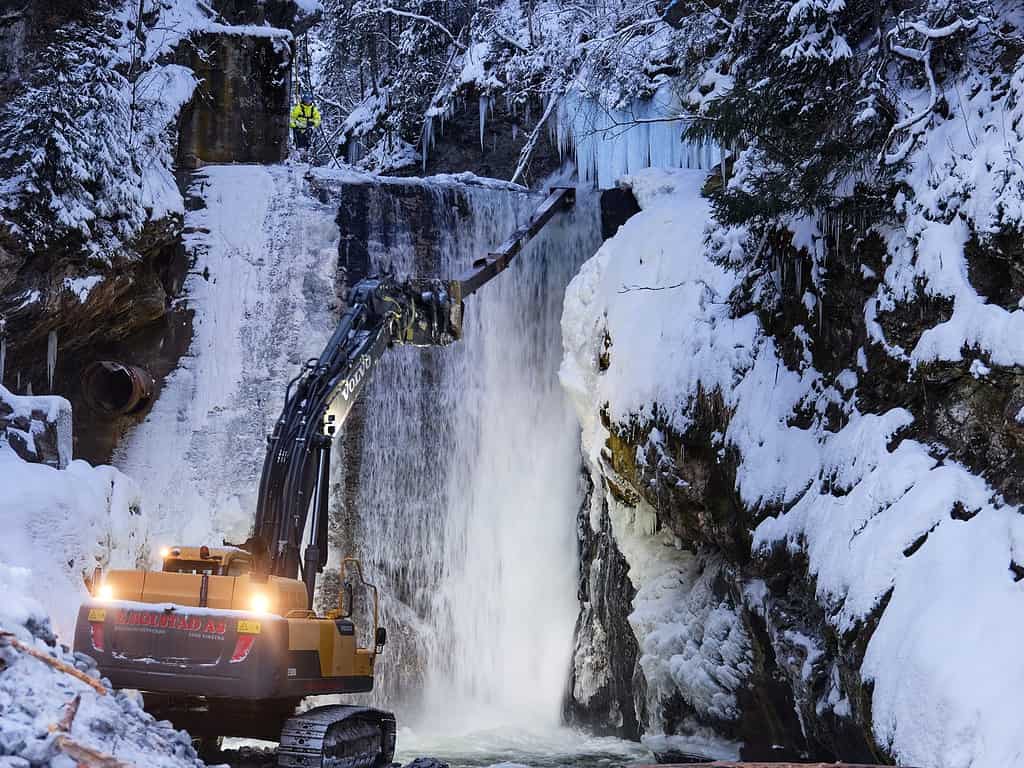At least 325 river barriers, including dams and weirs, were removed in Europe last year. That’s a 36% increase on the previous record set in 2021, according to a new report.
There are over one million barriers in Europe’s rivers, many built over a century ago, now serving no economic purpose, but affecting local ecosystems, the authors said.

The EU has set the goal of allowing 25,000 kilometers of rivers to flow freely again by 2030. Some EU member states already have established policies aiming to restore river connectivity. For example, Spain forces owners to remove any obsolete river barriers they own and Lithuania passed a law that states obsolete dams must be removed.
In its annual report, Dam Removal Europe (DRE), a coalition of seven EU environmental organizations that seek to restore the free-flowing state of rivers, found at least 325 barriers were removed from 16 countries. Spain led the ranking of barrier removal for the second year in a row, followed by Sweden and France – as it also happened in 2021.
“We started a riverlution, but only with the joint action of river practitioners, authorities, policymakers, and citizens, will be possible to achieve the EU Biodiversity Strategy targets,” Herman Wanningen, Director of the World Fish Migration Foundation, one of the member organizations of DRE, said in a media statement.
Taking out those barriers
Environmental organizations consider the removal of river barriers crucial to mitigating the negative impact they have on natural wetland ecosystems, such as reduced species abundance and distribution ranges, and degraded habitats.
In 2020, a study found that there are approximately 1.2 million barriers in 36 European countries, with 15% of them being obsolete.
Removing barriers from rivers also enhances recreational activities and aesthetics, as well as having significant positive effects on fisheries and local property values. One of the primary objectives of barrier removal projects worldwide is to restore fish passage, and dismantling riverine barriers has led to recolonization by migratory fish.
Several factors have contributed to the increasing numbers of river barriers being removed in Europe, DRE said. There are newly available funding opportunities, like the Open Rivers Programme, as well as coordinated efforts of governments to report removed barriers and the hype created by findings of last year’s report disseminated in Europe.
Last year, Norway dynamited a 106-year-old hydropower dam at Tromsa River. This nine-meter-high dam was built in 1916 and remained operative until the middle of the 20th century. Since then, this infrastructure has remained obsolete but continued to fragment the river. It took a five-year-long campaign for the demolition of the dam to be done, DRE explained.
France has also fully restored the free-flowing state of the Sélune River in Normandy. In June the hydroelectric dam of La Roche-qui-boit was demolished, following the removal of the Vezins hydroelectric dam in 2020. La Roche-qui-boit, a 16-m-high dam, was built in the early 1900s and was blocking the ecological continuity of the river.
Two new countries also joined the dam removal movement last year. Luxembourg removed a weir, part of a bigger project aimed at restoring the ecological continuity of Pétrusse River. And Latvias first reported barrier removal was a natural collapse. The barrier was fragmenting the Vilaine River and was attached to an obsolete watermill.
Up next, DRE said it hopes to mainstream and scale up barrier removal in Europe, providing guidance and assistance to river practitioners.
“Barrier removal is a cost-efficient and highly effective river restoration tool and DRE’s goal is to establish it as a common practice throughout Europe in the next few years,” the report concludes.


